Reviews
Wes Craven
USA, 1995
Credits
Review by Adam Balz
Posted on 25 October 2012
Source Paramount DVD
Categories 31 Days of Horror IX
When Bram Stoker’s Dracula was published in 1897 it introduced the world to what would become one of literature’s - and cinema’s - most iconic monsters. The monster drew immediate comparisons to historical figures like Elizabeth Bathory and Vlad the Impaler, but Stoker’s inspirations for the archetypical vampire seem to have been more contemporaneous: immigrants from continental Europe and epidemics that followed in their wake.
Stoker, however insensitively, was adapting social conditions in turn-of-the-century Britain for use in his novel, investing in his many characters, especially Dracula himself, a complex and touchy metaphorical utility. This utility, over the last few decades, has made its way into Dracula’s cinematic depictions, used extensively by writers and directors of all creeds and colors, including - to much variety and entertainment - African-Americans. On Thursdays throughout the month, we will examine the role of vampires as metaphors, as well as how those metaphors have shifted and changed according to evolving American social mores.
Two important events preceded the production and release of Wes Craven’s Vampire in Brooklyn: the videotaped beating of Rodney King by four white Los Angeles police officers, and the subsequent riots following the officers’ acquittals. Both were watershed moments, exposing the generations-old tension between police and the black community to white America while simultaneously ending the need for metaphors. The struggle once embodied in films by ridiculously transparent biracial partnerships - Lieutenant Peters and Doctor Thomas in Blacula, Lieutenants Jackson and O’Connor in Dr. Black, Mr. Hyde, both in search of killers in poor black neighborhoods - was now the headline in every major newspaper.
It’s a tension embodied in Craven’s film by the character of Rita, an African-American woman who is also a rookie cop with the New York Police Department. The daughter of a noted Caribbean researcher who recently died in an asylum, Rita is also part vampire, though she’s unaware of this as the film begins, knowing only that she’s much more of a “night person.” Pursued by Maximillian, who is looking to continue the reign of vampires - he and Rita, we’re told, are the last of their kind - Rita is increasingly torn between her need to do right and her desire to be with Maximillian, an internal struggle that only intensifies when she is suspended from the department and finally bitten.
Maximillian is written in much the same mold as Stoker’s Dracula. Taking the shape of a wolf-like beast, he feasts on the crew of a boat before arriving in Brooklyn, where he transforms a young numbers-runner named Julius Jones into his own personal Renfield by feeding him droplets of his blood, and for the remainder of the film Julius is seen eating only once, when he snacks on a precinct cockroach.
Vampire in Brooklyn also recalls its 1970s predecessors. Maximillian’s refusal to force Rita into becoming a vampire invokes Crain’s Blacula, who expresses the same desire of Tina. (“You must come to me freely with love,” Blacula says at one point, “or not at all. I will not take you by force.”) Earlier in Vampire in Brooklyn, before transforming Julius into his personal servant - or as he’s referred to throughout the film, “ghoul” - Maximillian saves the young man from certain death at the hands of two stereotypical Italian mobsters by pulling the heart out of one and dismembering the other, much the same way Blacula fights off the pimps in Scream, Blacula, Scream and Henry Pride dispatches the gang of thugs in Dr. Black, Mr. Hyde, only Vampire in Brooklyn depicts these attacks with much more focus on individual body parts rather than the attackers as whole: the heart, which Maximillian holds out in his hand for the victim to see, and the arms and legs that tumble into the air as the second man is torn apart.
But where the police were a solitary presence in vampire films from the 1970s, almost non-metaphors in films heavy with allegory, they play a much more complex role for Maximillian. The police represent to him what a slave name represented to Blacula, what the white lab-coat and expensive car represented to Henry Pride, and what Christianity may or may not have represented to Ganja and Hess—white dominance. Rita does not fit in with fellow officers, and only minutes after she first appears on-screen we’re told by her supervisor that she has yet to prove herself. Considering the film’s proximity to the Rodney King beating and the L.A. Riots, it seems only appropriate that our hero would find herself at odds with such a visible symbol of power. In her article on Vampire in Brooklyn, one of the few (if only) academic examinations of Craven’s film, Leslie Tannenbaum focuses her attention on the body as both a literal and metaphoric aspect of the plot, observing that:
Because he has to kill humans in order to feed, the vampire is most obviously disruptive of the social fabric and foregrounds the ability of the vampire’s body to contain the bodies of others… This literal containment of others by a black body also functions metonymically as a mimicking of similar attempts by the body politic to contain its citizens. Because most of Max’s victims are white, Max reverses the social order. While the white body politic seeks to contain unruly black bodies, we have here an unruly black body that literally contains whites by eating them and symbolically contains them by disarming two of its most powerful “organs”… the police and the mafia.1
This idea of “body” appears really appears once in research on this topic, concerning the role of the “Black church” in fighting HIV and AIDS. Cheryl Cole’s article for The Greatest Taboo uses the idea of body in discussing how religious leaders in the African-American community framed the discussion about AIDS as a discussion about addiction, which “inscribes recklessness, compulsion, and insufficient free will on bodies.” 2 In the very next section she reexamines how mainstream journalism, confused over the revelation that basketball player Magic Johnson was both HIV-positive and heterosexual, followed him in the hopes of catching hints of sexual impropriety, evidence they never found. At the same time, according to Cole, Johnson defended himself fervently against charges that he had contracted HIV through homosexual sex, at times seeming homophobic in his statements, such as when he insisted on The Arsenio Hall Show that he was “far from being homosexual. You know that. Everybody else who’s close to me understands that”.2
As Vampire in Brooklyn progresses, Julius Jones begins to decompose, though only he and Maximillian acknowledge this as actually happening. One of his hands becomes detached from his arm, then the entire arms falls off, and during the climax of the film, one of Julius’ eyes pops out and rolls across the floor. His appearance is reminiscent of the second victim in Def by Temptation, a philandering husband who awakens the day after his tryst with the vampire Temptation to discover that he is rotting. Later in the same film we’re offered a nightmare sequence in which Temptation’s many male victims are seated around a bar, all of them in various states of decomposition; the scene ends after one of these men vomits into a glass.
The main difference between Vampire in Brooklyn and its predecessors is how we are supposed to view the lead vampire. Blacula and Henry Pride eventually give in to their white lineage - a forced lineage for one and desired lineage for another - while Ganja and Hess leave Gunn’s film as ambiguous entities. And Temptation, appearing almost two decades after the last qualifiedly African-American vampire film, and only a few years after the end of the Reagan Administration, is undoubtedly the villain. But Maximillian, as Tannenbaum notes, isn’t treated as such; in fact, according to Tannenbaum, he is depicted as a hero, a crusader against racism, and she offers his death as proof:
While Blacula and other vampires usually disintegrate completely at the end of the movie in the obligatory decaying body scene, Max’s body is restored to its original handsome state [after he is staked] and then undergoes what is clearly an apotheosis, being transformed into a dove that flies out the window surrounded by a saintly aureole. This heroic vision, like any other definitive reading of Max, is undercut by a final scene in which Max is reincarnated as Julius, but the image still remains as an important facet of Max’s character.1
The closing scene Tannenbaum mentions, in which Julius becomes Maximillian, occurs when Julius discovers one of the dead vampire’s rings on the roof of the limousine he’s used to escort Maximillian around Brooklyn. Once Julius slips the ring on his finger, his decaying body becomes whole again, suddenly dressed in decadent clothes. And, in a final nod to how we should view Maximillian, Julius, after reaching down to grab his crotch, comments in amazement about Maximillian’s sexually endowments.
The vampires who appeared after Maximillian, specifically Aaliyah’s Akasha in Queen of the Damned and Wesley Snipes’ Blade, are far from the subjects of this discussions. They are vampires of the 21st century, derived from the ever-present need for box-office success rather than social dialogue. They are vampires of the studio system, adapted and rewritten to appeal to audiences everywhere, to gather critical acclaim and set new attendance records, to earn awards rather than instill awareness. And, in the process, they have become the victims of an even more ruthless and vampiric presence: mainstream Hollywood.
In the introduction to Our Vampires, Ourselves, Nina Auerbach, a professor of English at the University of Pennsylvania, begins by writing of vampires, “They may look marginal, feeding on human history from some limbo of their own, but for me, they have always been central: what vampires are in any given generation is part of what I am and what my times have become”.3 And throughout her book Auerbach demonstrates her point, examining the social atmospheres that influences Bram Stoker’s Dracula, as well as how the vampire changed throughout the 20th century to accommodate the reshaping of America brought on by, among other things, AIDS, sexuality, and the presidencies of Ronald Reagan and George H.W. Bush. “The alacrity,” she writes, “with which vampires shape themselves to personal and national moods is an adaptive trait their apparent uniformity masks.”3
But more importantly, Auerbach recognizes the important connection between vampires and the people who create and enjoy them—the “ourselves” of her book’s title. In discussing vampires, she also weaves a person tapestry meant to explain her decades-long love of Stoker’s literary children:
In the 1960s, like so much else that had been denied in the ’50s, [vampires] burst out of underground crypts that had confined Bela Lugosi into the light of brightly colored Hammer films. In the 1970s, like American women, they broke out of their preordained plot to create self-generated new stories. If we each have a halcyon decade, the 1970s was mine; it saw the burgeoning of the women’s movement; the beginning of my career (and the frightening, exhilarating moves around America this career made possible); the end of the war in Vietnam; the end (we thought) of corrupt old way sin the fall of Nixon’s presidency. It also saw the assimilation of horror into mainstream culture. My exhilarating memories of the ’70s are entwined with its innovative and self-defining vampires; my depression, in the ’80s, about Ronald Reagan’s grinning descent over the American imagination colors my memory of vampires newly subdued.3
Auerbach’s “halcyon decade” did indeed bring about the breaking of “preordained plots,” especially in African-American film. Blacula is no Bela Lugosi, just as Henry Pride is undeniably far from what Robert Louis Stevenson could ever have envisioned for his tortured protagonist. Ganja, whose “breaking” of plots is twofold in that she’s both a vampire and a woman, is far from the Irma Veps of yesteryear, and even today she has few equals in the vampire subgenre of horror cinema. The “subdued” vampires of the 1980s - the Lost Boys, Grace Jones’ Katrina in Vamp, Kathryn Bigelow’s roving family of bloodsuckers in Near Dark - gave way to the small resurgence in African-American vampires that, as noted earlier in Auerbach’s introduction, tackled the subjects real Americans were afraid to.
Auerbach concludes her introduction with the following thought, probably the most relevant as they pertain to the films I’ve examined and the significance of their metaphorical structure:
Individual vampires may die; after almost a century, even Dracula may be feeling his mortality; but as a species vampires have been our companions for so long that it is hard to imagine living without them. They promise escape from our dull lives and the pressures of our times, but they matter because when properly understood, they make us see that our lives are implicated in theirs and our times are inescapable.3
- Tannenbaum, Leslie. “Policing Eddie Murphy: The Unstable Black Body in Vampire in Brooklyn.” The Fantastic Vampire: Studies in the Children of the Night: Selected Essays from the Eighteenth International Conference on the Fantastic in the Arts. Ed. James Craig Holte. Westport, Connecticut: Greenwood Press, 2002. 69-76. ↩
- Cole, Cheryl. “Containing AIDS: Magic Johnson and Post-Reagan America.” Queer Theory/Sociology. Ed. S. Seidman. Cambridge, MA: Blackwell, 1996. Rpt. in The Greatest Taboo: Homosexuality in Black Communities. Ed. Delroy Constantine Simms. New York: Alyson Books, 2001. 415-440. ↩
- Auerbach, Nina. Our Vampires, Ourselves. Chicago: University of Chicago Press, 1995. ↩
More 31 Days of Horror IX
-
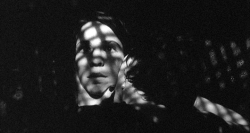
The Addiction
1995 -

Psycho III
1986 -
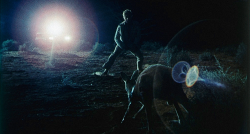
Wake in Fright
1971 -
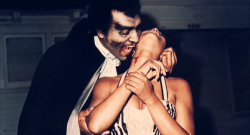
Blacula
1972 -
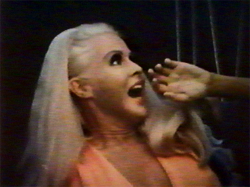
Big Foot
1970 -

Trollhunter
2010 -
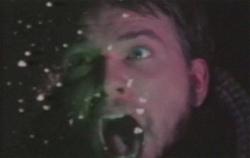
Invasion from Inner Earth
1974 -

In the Company of Men
1997 -
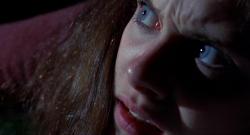
Happy Birthday to Me
1981 -
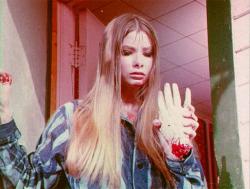
I Drink Your Blood
1970 -

The Legend of Boggy Creek
1972 -

Maximum Overdrive
1986 -

The Giant Spider Invasion
1975 -
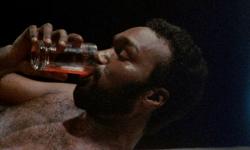
Ganja & Hess
1973 -
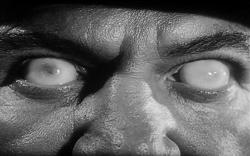
Not of This Earth
1957 -

Let’s Scare Jessica to Death
1971 -
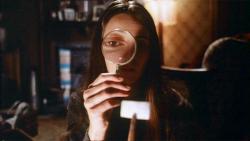
Next of Kin
1982 -
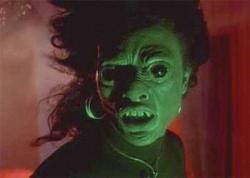
Def by Temptation
1990 -
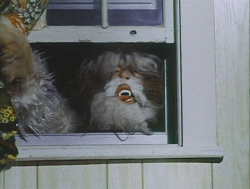
Shriek of the Mutilated
1974 -
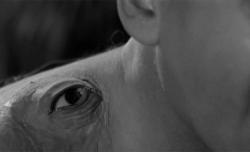
The Manster
1959 -
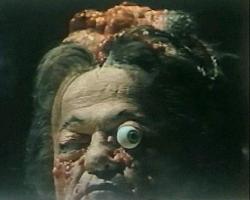
The Alpha Incident
1978 -
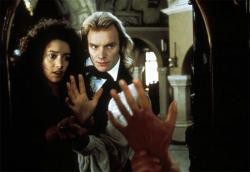
The Bride
1985 -

Planet of the Vampires
1965 -

The Hole
2009 -
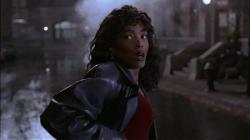
Vampire in Brooklyn
1995 -

Sasquatch: the Legend of Bigfoot
1977 -
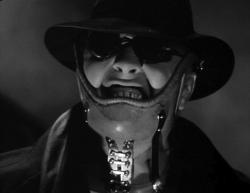
Mad Love
1935 -
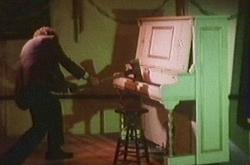
The Demons of Ludlow
1983 -

Habit
1997 -

Elephant
1989 -

The Blair Witch Project
1999
We don’t do comments anymore, but you may contact us here or find us on Twitter or Facebook.



